The Nancy Drew Sleuth Book
Read The Nancy Drew Sleuth Book Online
Authors: Carolyn Keene

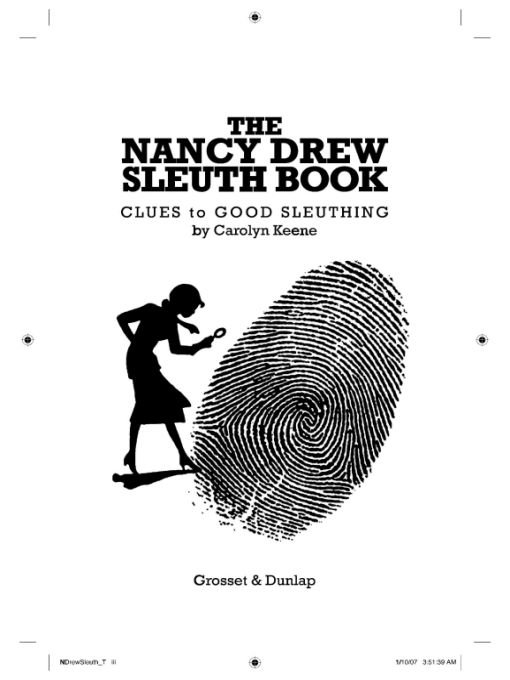
Table of Contents
“Of course we can solve mysteries as well as grown-up detectives.” This was Nancy Drew’s answer to a question from a group gathered in her living room in River Heights. “How would you like to form a detective club and have meetings at my house? Later we can solve some mysteries. What do you say?”
Cheers and applause greeted this remark. Nancy suggests that you readers work along with the club and learn how to become amateur detectives.
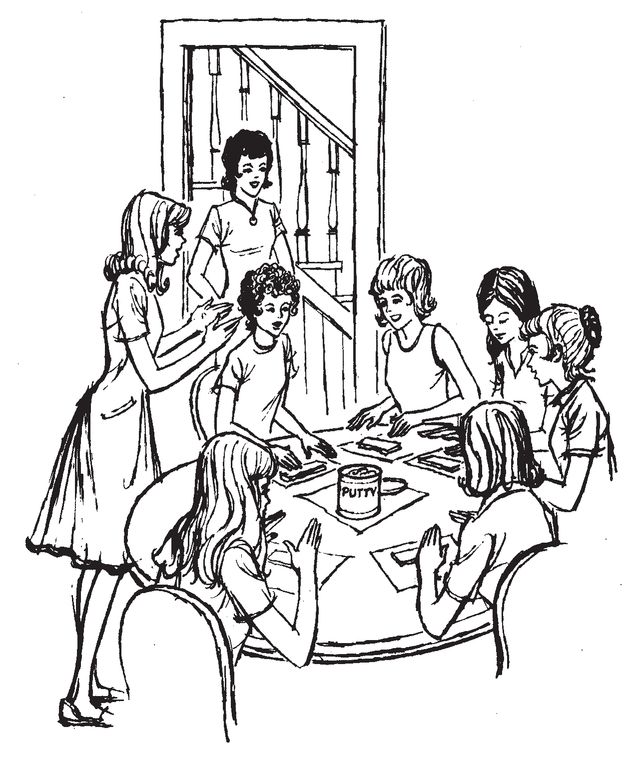
"One! Two! Three! Go!”
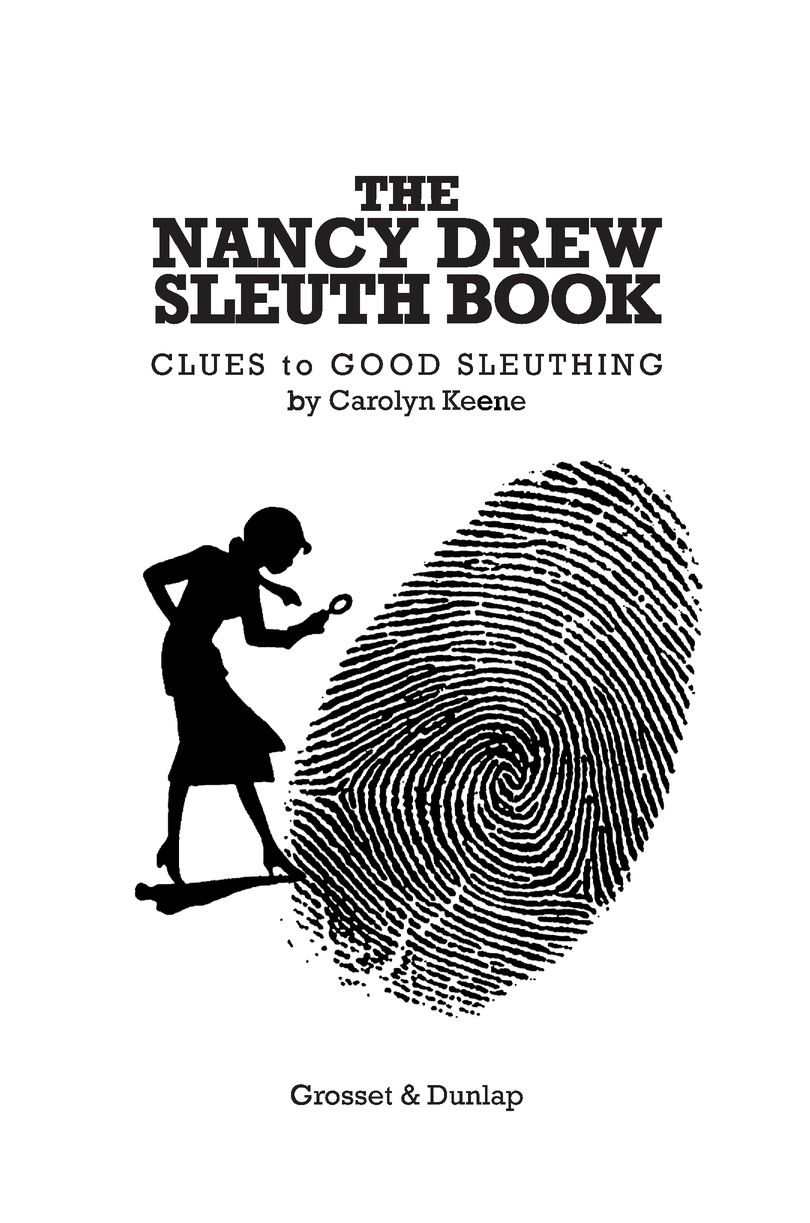
GROSSET & DUNLAP
Published by the Penguin Group
Penguin
Group (USA) Inc., 375 Hudson Street,
New York, New York 10014, U.S.A.
Penguin Group (Canada), 90 Eglinton Avenue East, Suite 700, Toronto, Ontario,
Canada M4P 2Y3
(a division of Pearson Penguin Canada Inc.)
Penguin Books Ltd, 80 Strand, London WC2R ORL, England
Penguin Ireland, 25 St Stephen’s Green, Dublin 2, Ireland
(a division of Penguin Books Ltd)
Penguin Group (Australia), 250 Camberwell Road, Camberwell, Victoria 3124, Australia
(a division of Pearson Australia Group Pty Ltd)
Penguin Books India Pvt Ltd, 11 Community Centre,
Panchsheel Park, New Delhi—110 017, India
Penguin Group (NZ), 67 Apollo Drive, Mairangi Bay,
Auckland 1311, New Zealand (a division of Pearson New Zealand Ltd)
Penguin Books (South Africa) (Pty) Ltd, 24 Sturdee Avenue,
Rosebank, Johannesburg 2196, South Africa
Published by the Penguin Group
Penguin
Group (USA) Inc., 375 Hudson Street,
New York, New York 10014, U.S.A.
Penguin Group (Canada), 90 Eglinton Avenue East, Suite 700, Toronto, Ontario,
Canada M4P 2Y3
(a division of Pearson Penguin Canada Inc.)
Penguin Books Ltd, 80 Strand, London WC2R ORL, England
Penguin Ireland, 25 St Stephen’s Green, Dublin 2, Ireland
(a division of Penguin Books Ltd)
Penguin Group (Australia), 250 Camberwell Road, Camberwell, Victoria 3124, Australia
(a division of Pearson Australia Group Pty Ltd)
Penguin Books India Pvt Ltd, 11 Community Centre,
Panchsheel Park, New Delhi—110 017, India
Penguin Group (NZ), 67 Apollo Drive, Mairangi Bay,
Auckland 1311, New Zealand (a division of Pearson New Zealand Ltd)
Penguin Books (South Africa) (Pty) Ltd, 24 Sturdee Avenue,
Rosebank, Johannesburg 2196, South Africa
Penguin Books Ltd, Registered Offices:
80 Strand, London WC2R ORL, England
80 Strand, London WC2R ORL, England
The scanning, uploading, and distribution of this book via the Internet or via any other
means without the permission of the publisher is illegal and punishable by law.
Please purchase only authorized electronic editions, and do not participate in or encourage
electronic piracy of copyrighted materials. Your support of the author’s rights is appreciated.
means without the permission of the publisher is illegal and punishable by law.
Please purchase only authorized electronic editions, and do not participate in or encourage
electronic piracy of copyrighted materials. Your support of the author’s rights is appreciated.
The Library of Congress has cataloged the original edition as follows:
Library of Congress Control Number: 78058209
Library of Congress Control Number: 78058209
eISBN : 978-1-101-50128-3
CHAPTER I
THE BURGLAR’S NOTE
Handwriting,
clues
clues
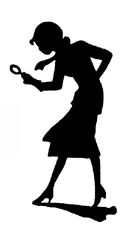
“WHO brought a mystery today?” Nancy Drew asked the six girls in her Detective Club. This was the first meeting of the newly formed group, and the subject was to be handwriting.
“I have a good mystery,” Cathy Chase, Nancy’s blond, blue-eyed friend who loved to wear light blue sweaters, replied. “My mother always leaves house money in a coffee can in a kitchen cupboard. It’s used by everyone in the family, and little notes are left about how much is taken out by whom. This morning Mother discovered that all the money was gone, and so were our notes.”
“I’ll bet someone in the Chase family is playing a joke,” Sue Fletcher called out. She was a brunette with short, curly hair and black eyes.
“No,” Cathy replied. “The burglars left three new notes. They were written in strange handwritings.”
The club members looked at one another, then at Nancy Drew. The young strawberry blond detective smiled. “The notes could have been left by one, two, or three burglars.” She asked Cathy, “Did you bring the messages?”
“Yes.” Cathy took three slips of paper from her handbag. She handed them to Nancy, who held them up for the other girls to see. Each note was in a different script. The first one said:
Thank you
. The next one said:
I need this money more than you do
. The third was in an exaggerated, artificial scrawl, slanting downward at the end of the line and read:
Ha! Ha! I dare you to find me!
Thank you
. The next one said:
I need this money more than you do
. The third was in an exaggerated, artificial scrawl, slanting downward at the end of the line and read:
Ha! Ha! I dare you to find me!
Nancy stared at the notes thoughtfully. “Cathy, are you suspicious of anyone?”
“No.”
“Do you think one person could have written all three notes?” Sue asked.
Nancy studied the messages closely. “There are people who can imitate other handwritings so well that even the experts cannot be sure, but it’s rare. Let’s see if we can find similarities in the shape of the letters, their slant, pressure, spacing, and size.”
“What difference does letter size make?” Karen Carpenter wanted to know. She was full of fun.
“Letter size makes a lot of difference,” Nancy answered. “A person who enjoys activity and achievement tends to have a large handwriting. He or she takes on a large task with excitement, where others often feel intimidated. It is someone who is always on the go, who’s enthusiastic and interested in large issues, usually bored by details, and often restless and impatient.”
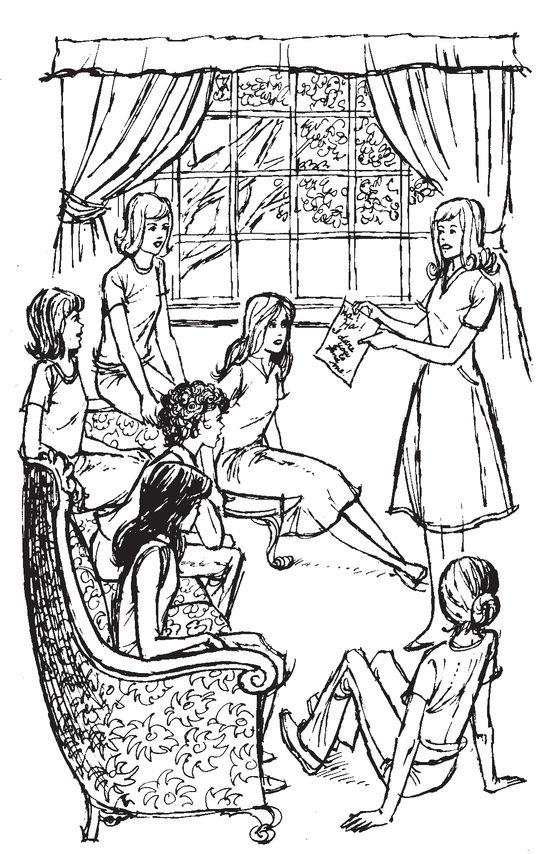
“Ha! Ha! I dare you to find me!” the note read.
“Like you,” Cathy said to Karen.
“That’s true,” Karen reflected. “I do make my letters rather large. What about people who write small letters?”
“People who write small are usually thorough and think things through. They’re able to face life without getting upset and are often observant. Sometimes they like to be aloof from others, but actually they are often more interested in other people than those with large handwriting.” Nancy paused.
“I have an uncle who squeezes so much onto a page, you can hardly read it,” Karen said.
Nancy nodded. “It suggests that he’s stingy.”
“That he is,” said Karen.
The girls scrutinized the messages for a few minutes, then came to the conclusion that they were most likely written by different people.
“Can you tell a man’s writing from a woman’s?” asked Peg Goodale, who had brown hair and large brown eyes.
“Not always,” Nancy replied. “But you can make an educated guess whether or not the script looks masculine or feminine. I think that these notes look like they were written by men. They were written with heavy pressure and the crosses of certain letters like
t
and
f
are very long—two indicators of a masculine hand. What does everyone think?”
t
and
f
are very long—two indicators of a masculine hand. What does everyone think?”
The girls agreed with Nancy. Nancy took the first message and laid it on the table for everyone to see. “Let’s start with this one and find out what it tells us about the writer. The letters are spaced pretty far apart and are slanted to the right.”
“What does that mean?” Karen asked.
“A forward slant indicates more heart than head control, an outgoing person who enjoys being with others. The wide spacing shows that he likes plenty of room, is spontaneous, and is probably a generous person.”
“He doesn’t sound like a wily old burglar,” remarked Honey Rushmore, the secretary. She had honey-colored hair, rosy cheeks, and gray eyes.
“No, he doesn’t,” Nancy agreed. “Especially since his writing is also clear and legible, which means he doesn’t try to hide anything. His pressure is light, which makes him a gentle and sensitive person.”
“Shall we rule him out as a suspect?” Sue asked.
“Yes,” Nancy replied. “Let’s check the next one.” The girls scanned the second note closely.
“This man is more controlled by intellect than emotion,” Nancy said, “because he makes his letters straight. He’s also more reserved and self-reliant. His pressure is medium, which suggests that he is healthy, and fond of people and things. You see, heavy pressure indicates intensity, while a mixture of light, medium, and heavy often shows a physical or mental disturbance.”
“His spaces are narrow but even,” Sue pointed out.
“The evenness means he’s in control of every situation,” said Nancy. “And look at the
e
at the end of
more.
It has an extended, ascending final stroke. That makes him a warm person. Also, his o is open, meaning he’s honest. When o’s and
a
’s are closed and knotted, the writer is highly secretive and reserved, often insincere. But not this writer.”
e
at the end of
more.
It has an extended, ascending final stroke. That makes him a warm person. Also, his o is open, meaning he’s honest. When o’s and
a
’s are closed and knotted, the writer is highly secretive and reserved, often insincere. But not this writer.”
“Well, I’d say that eliminates number two from our list of suspects,” Sue declared. “What about the last note?”
The message,
Ha! Ha! I dare you to find me!
was examined by each girl. The words, sprawled downward in a slightly zigzagging angle, fascinated them.
Ha! Ha! I dare you to find me!
was examined by each girl. The words, sprawled downward in a slightly zigzagging angle, fascinated them.
Other books
WAR: Opposition: (WAR Book 3) by Vanessa Kier
London in Chains by Gillian Bradshaw
Voices by Ursula K. Le Guin
This Is Not a Test by Courtney Summers
Mechanical by Pauline C. Harris
Message of Love by Jim Provenzano
Tight End by Matt Christopher
Moon of Skulls by Robert E. Howard
Dying Days 4 by Armand Rosamilia
SleepyHollow2BookBundle by Ranae Rose
